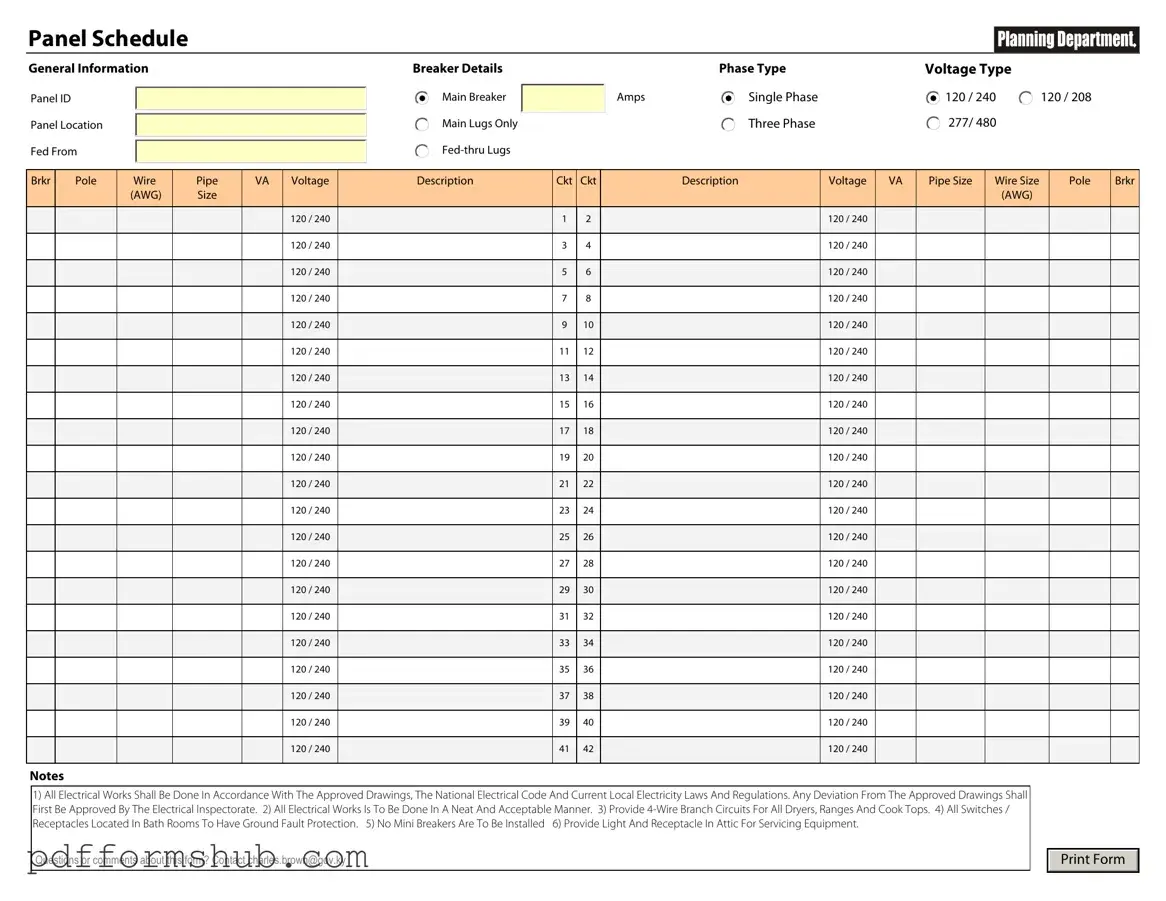Fill in Your Electrical Panel Schedule Form
The Electrical Panel Schedule form is a vital document that outlines the electrical distribution system in a building. It provides detailed information about circuit breakers, load calculations, and panel configurations, ensuring safety and efficiency in electrical installations. Understanding this form is essential for both homeowners and professionals in the electrical field.
Ready to take the next step? Fill out the Electrical Panel Schedule form by clicking the button below!
Customize Form
